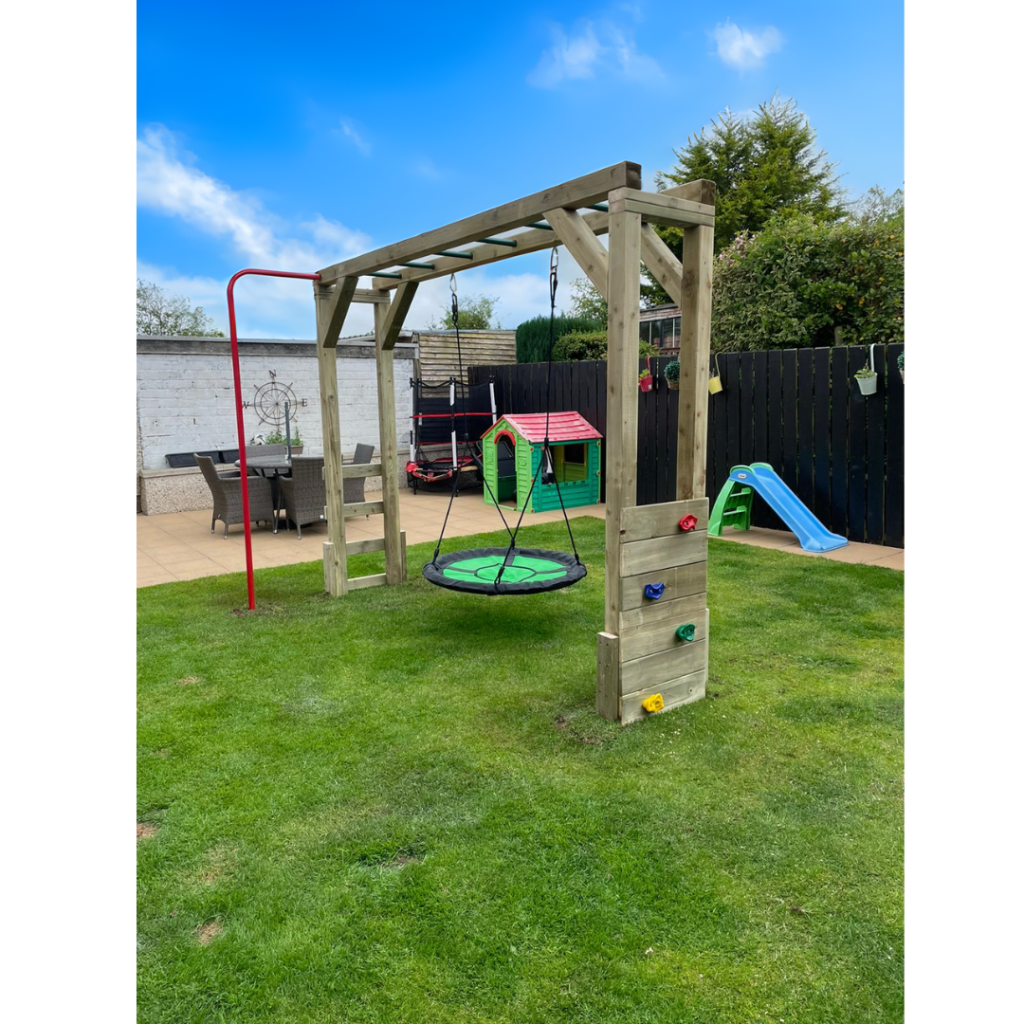
Safety First: Essential Tips for Maintaining Your Climbing Frame
A well-maintained climbing frame is the cornerstone of safe, enjoyable outdoor play for your children. Regular maintenance not only extends the life of your climbing frame but also ensures it remains a secure environment for your little ones. Here’s a detailed guide to keeping your climbing frame in top condition, putting safety at the forefront.
1. Conduct Regular Inspections: Catching Problems Early
Regular inspections are vital for identifying potential hazards before they become serious issues. Schedule routine checks, ideally every few weeks, to look for any signs of wear and tear. Pay close attention to areas where rust, cracks, splinters, or loose bolts might appear. Early detection of these issues can prevent accidents and prolong the life of your climbing frame.
2. Tighten Bolts and Screws: Securing Structural Integrity
Over time, bolts and screws can loosen due to regular use and weather conditions. Ensure all fastenings are tight during each inspection. Loose components can compromise the stability of the climbing frame, making it unsafe for play. Use the appropriate tools to secure any loose parts, and replace any missing or damaged hardware immediately.
3. Treat Rust and Corrosion: Protecting Metal Frames
If your climbing frame has metal components, rust and corrosion are common issues that can weaken the structure. Regularly inspect the frame for any signs of rust, particularly at joints and where the metal meets other materials. Treat affected areas promptly with rust-resistant paint or coatings to prevent further deterioration. This simple step can significantly extend the life of your metal climbing frame and maintain its safety.
4. Inspect Wooden Parts: Preserving Natural Materials
Wooden climbing frames require particular attention to prevent rot, splinters, and insect damage. Examine all wooden components carefully, especially those that are in direct contact with the ground or exposed to the elements. Sand down any splinters to prevent injuries and treat the wood with a weather-resistant sealant to protect against moisture and pests. Regular treatment can prevent decay and keep the frame sturdy for years to come.
5. Maintain Safety Surfacing: Cushioning Falls
Safety surfacing beneath and around your climbing frame is crucial for preventing injuries from falls. Regularly check the condition of the surfacing materials, such as rubber mats, wood chips, or sand, to ensure they remain effective. Over time, these materials can compact or wear away, reducing their cushioning ability. Replenish or replace the surfacing as needed to maintain a soft landing zone.
6. Check for Stability: Ensuring a Firm Foundation
A stable climbing frame is essential for safe play. Regularly test the frame’s stability by giving it a gentle shake and checking for any wobbling or tilting. Make sure the frame is firmly anchored to the ground. If you notice any instability, adjust or reinforce the anchors immediately. A climbing frame that moves or leans poses a significant safety risk and should not be used until it is properly stabilised.
7. Clean Regularly: Preventing Wear and Tear
Dirt, grime, and mould can accumulate on your climbing frame, leading to premature wear and potentially creating slippery surfaces. Regular cleaning helps maintain both the appearance and safety of the frame. Use mild soap and water to clean all surfaces, and avoid harsh chemicals that could damage the materials. A clean frame not only looks better but also functions more safely.
8. Monitor Weather Damage: Responding to Nature’s Impact
Severe weather can take a toll on your climbing frame, especially during storms, heavy rain, or extreme temperatures. After any significant weather event, inspect the frame for signs of damage such as loosened bolts, cracked wood, or rusted metal. Prompt repairs are essential to maintaining the safety and integrity of the structure. Consider moving portable frames to a sheltered area during extreme weather to protect them from damage.
9. Replace Worn-Out Parts: Avoiding Dangerous Breakdowns
Even with the best maintenance, parts of your climbing frame will eventually wear out. Regularly assess the condition of all components and replace any that show significant wear or damage. Using a frame with worn-out parts can lead to accidents, so it’s important to address these issues immediately. Always use manufacturer-approved parts for replacements to ensure compatibility and safety.
10. Supervise Playtime: The Final Safety Measure
While a well-maintained climbing frame is safer, nothing replaces the importance of adult supervision. Always keep an eye on children while they are playing, ensuring they use the equipment properly and do not engage in risky behaviour. Supervision allows you to intervene quickly if an issue arises and helps reinforce safe play habits.
Conclusion: Prioritising Safety Through Maintenance
Maintaining your climbing frame is an ongoing process that requires attention to detail and a proactive approach. By following these essential tips, you can ensure that your climbing frame remains a safe and enjoyable space for your children to play. Remember, a little time spent on regular maintenance can prevent accidents and extend the life of your climbing frame, making it a lasting investment in your children’s outdoor fun. Safety first, always!




